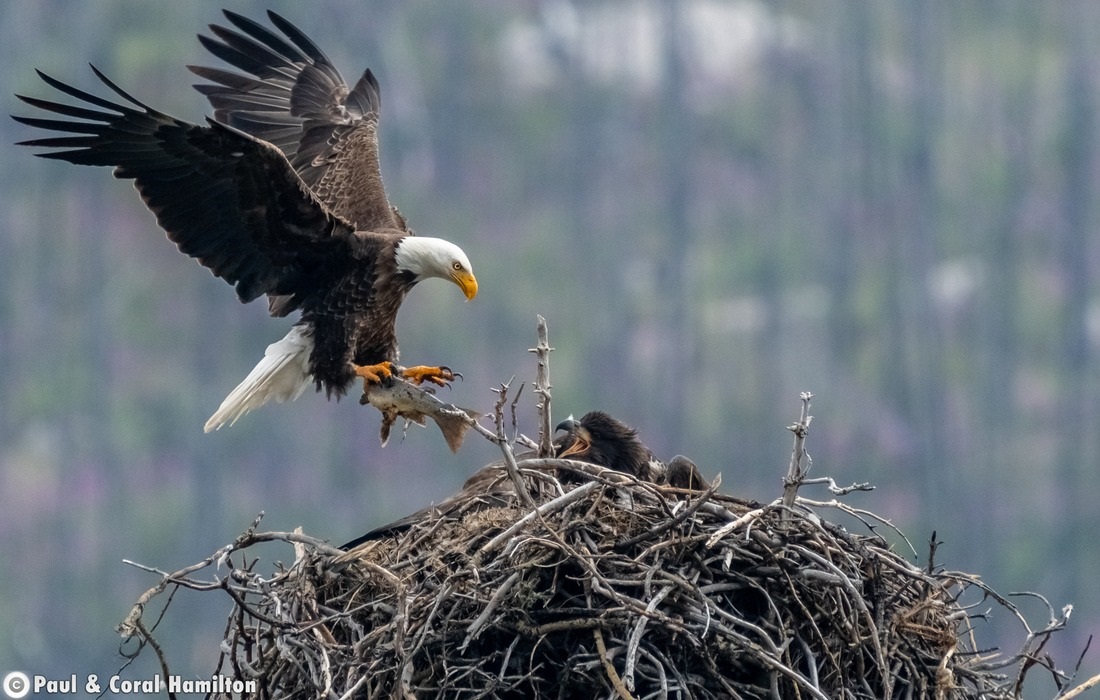Bald Eagle
About the Bald Eagle
The bald eagle is a bird of prey found in North America. The Bald eagle's range includes most of Canada and Alaska, all of the contiguous United States, and northern Mexico. Eagles are found near large bodies of open water with an abundant food supply and typically nest in old-growth trees.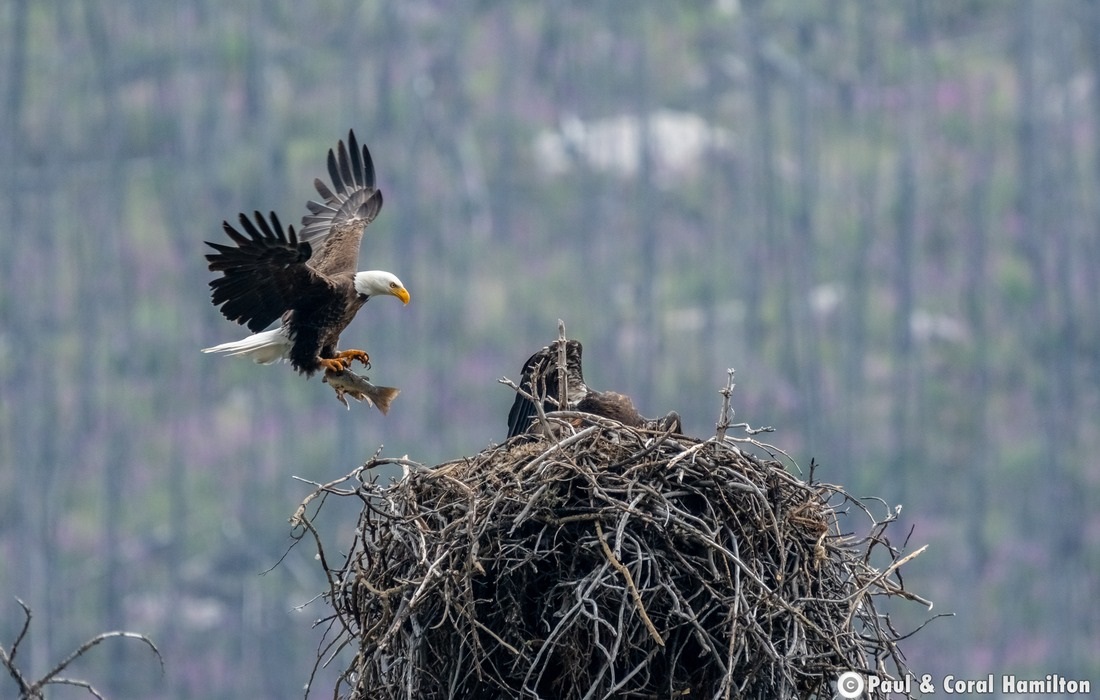
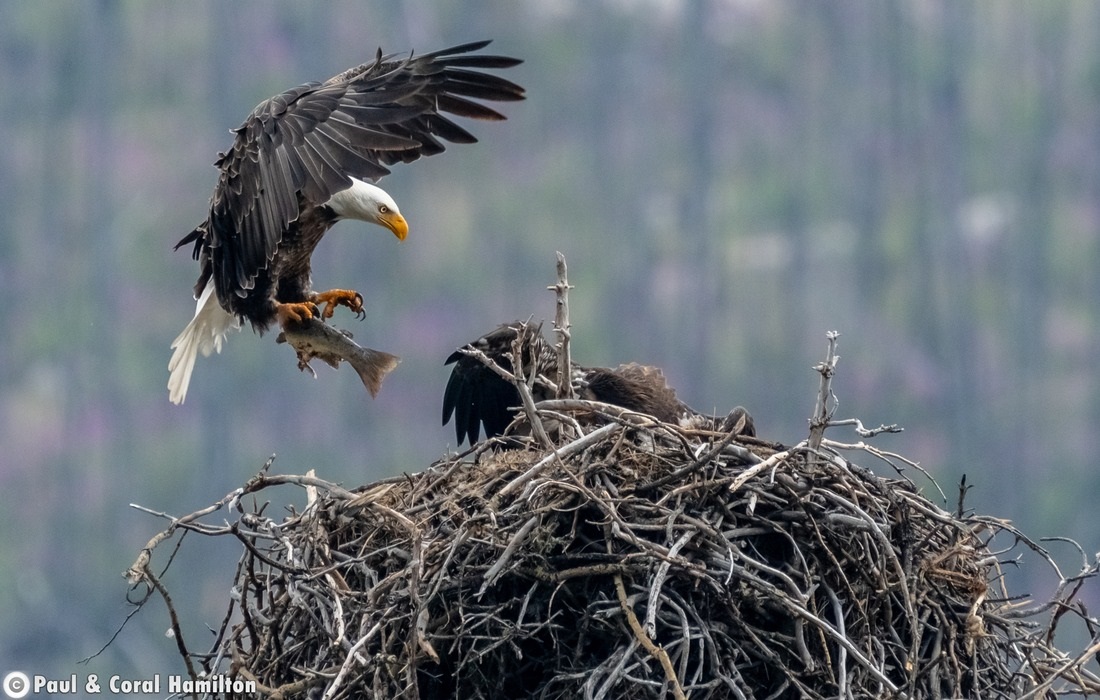
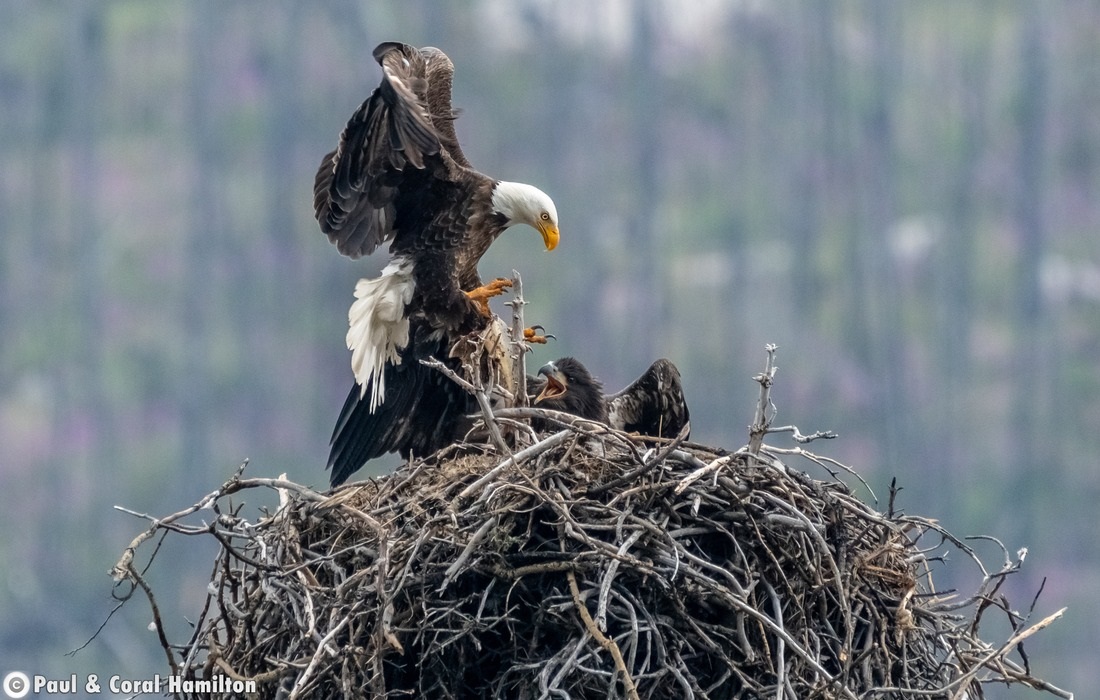
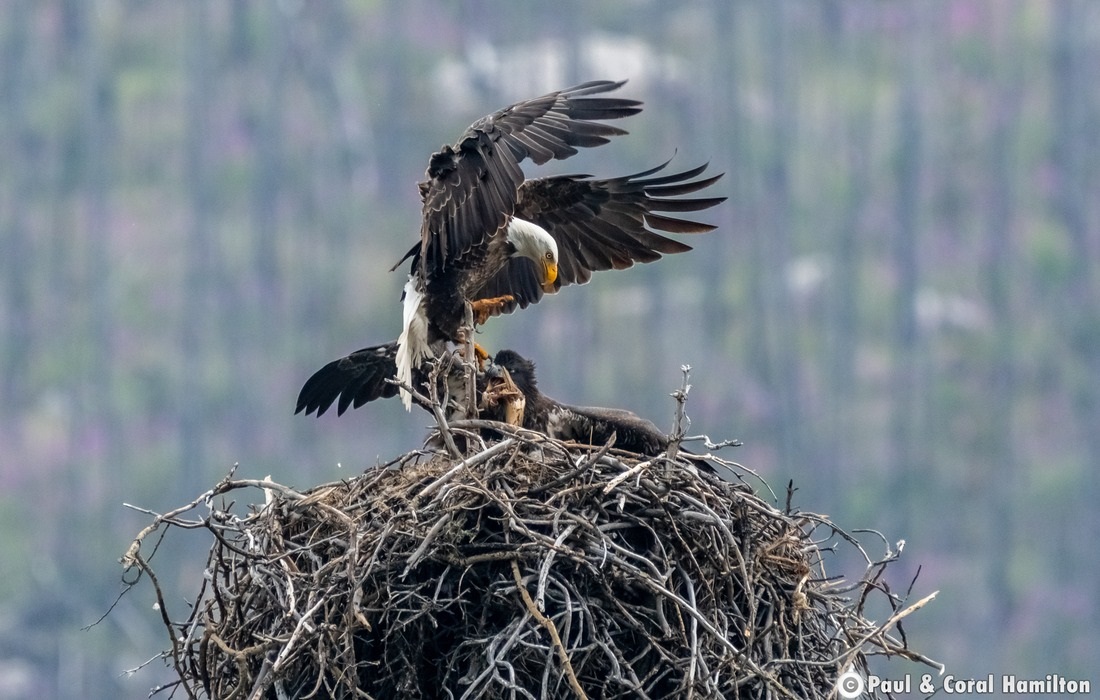
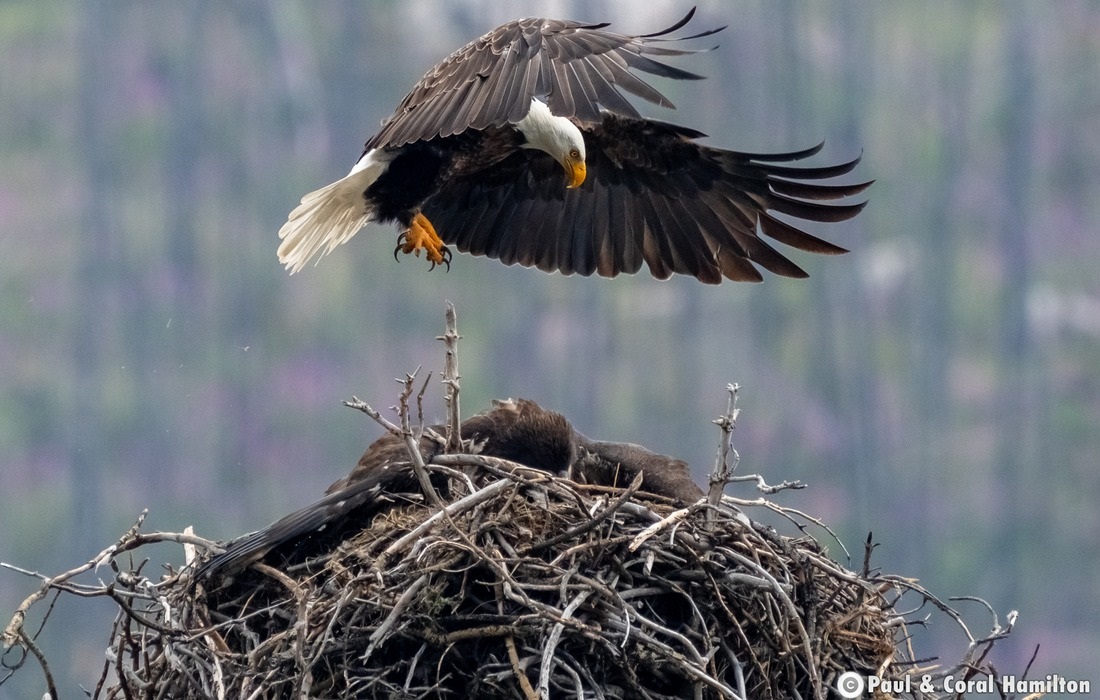
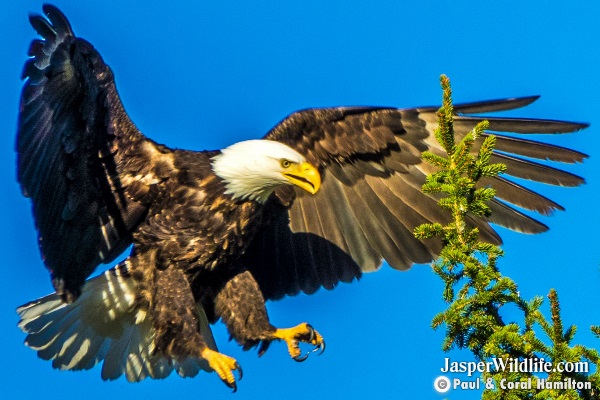
Eagles Feeding their Newborn Eaglet
Eaglets in Jasper, Alberta. >> While Bald Eagles may lay eggs from mid-November to mid-January in Florida, in Canada and Alaska they lay eggs in April or May. From the laying of the first egg to the fledging, or first flight, of the last young commonly takes 16 to 18 weeks. Here is a very young single Eaglet being fed. We cropped this in from quite a distance, so it may be a little shaky at times.
2 Eaglets Growing Fast
Eaglets in Jasper, Alberta. >> Eaglets hatch after 35 days of incubation and are in the nest for 10-12 weeks before they fledge or take their first flight. Eagle juvenile plumage is complete in 10-14 weeks, by which time they are generally fully grown. On average, Eaglets spend 4-12 weeks in the nesting territory post-fledging, the time during which they learn to hunt and fly.
The bald eagle is an opportunistic feeder that can swoop down and snatch fish from the water with its talons. Eagles build the largest nest of any North American bird and the largest tree nests ever recorded for any animal species, measuring up to 4 m (13 ft) deep, 2.5 m (8.2 ft) wide, and 1 metric ton (1.1 short tons) in weight. Sexual maturity is attained at the age of four to five years. Bald eagles are not actually bald; the name derives from an older meaning of the word, "white headed". The adult eagle is mainly brown with a white head and tail. The sexes are identical in plumage, but females are about 25 percent larger than males. The beak is large and hooked. The plumage of the immature is brown.
How large are Bald eagles?
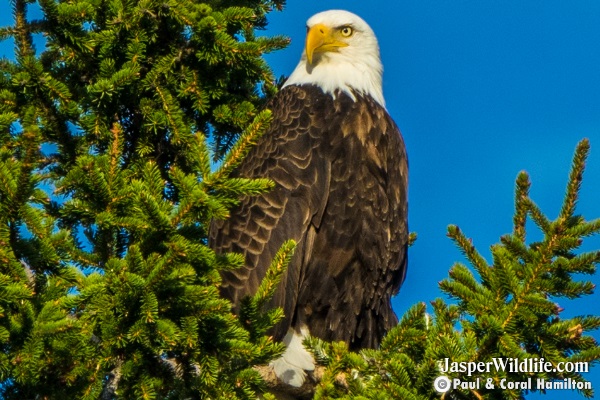
The bald eagle has a body length of 70 - 102 cm (28 - 40 in). Typical wingspan is between 1.8 and 2.3 m (5.9 and 7.5 ft) and mass is normally between 3 and 6.3 kg (6.6 and 13.9 lb). Females are about 25% larger than males, averaging 5.6 kg (12 lb), and against the males' average weight of 4.1 kg (9.0 lb).
An Eagle's Wingspan
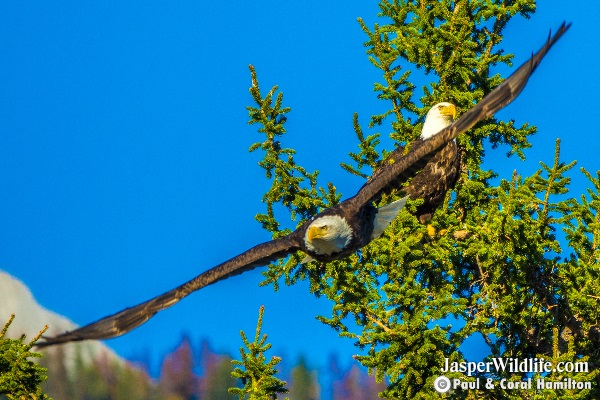
The size of Bald eagles vary by location and generally increase in size as they are further away from the Equator and the tropics. Eagles in Jasper can weigh up to 7.5 kg (17 lb) with a wingspan of up to 2.44 m (8.0 ft) across the wings. Adult standard measurements: the wing chord is 51.5 - 69 cm (20.3 - 27.2 in), the tail is 23 - 37 cm (9.1 - 14.6 in) long, and the tarsus is 8 to 11 cm (3.1 to 4.3 in). The culmen reportedly ranges from 3 to 7.5 cm (1.2 to 3.0 in), while the measurement from the gape to the tip of the bill is 7 - 9 cm (2.8 - 3.5 in). The bill size is unusually variable as Jasper's eagles could be up to twice the bill length of "southern birds" (i.e from Florida), with means in between the sexes of 6.83 cm (2.69 in) and 4.12 cm (1.62 in) in culmen length, respectively, from these two areas.
Bald Eagle Behavior
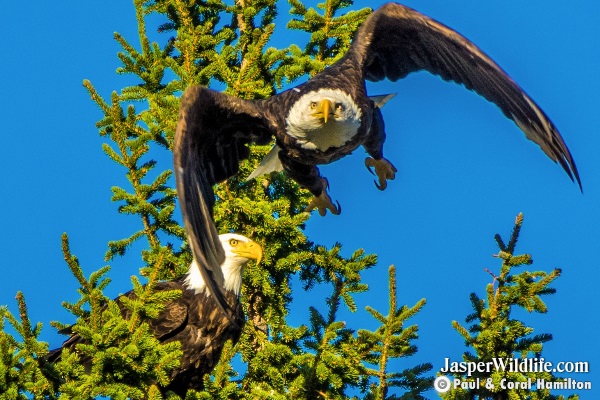
The bald eagle is a powerful flier, soaring on thermal convection currents. It reaches speeds of 56 - 70 km/h when gliding and flapping, and about 48 km/h while carrying fish. An Eagle's dive speed is between 120 - 160 km/h, though it seldom dives vertically. Regarding eagle's flying abilities, the bald eagle is considered surprisingly maneuverable in flight. Eagles can turn, double back or dive incredibly quickly. Bald eagles have been recorded catching up to and then swooping under geese in flight, turning over and thrusting their talons into the other bird's breast. It is partially migratory, depending on location.
If its territory has access to open water, it may remain there year-round, but if the body of water freezes during the winter, making it impossible to obtain food, Bald eagle's may migrate to the south or to the coast. Bald eagle's select migration routes which take advantage of thermals, updrafts, and food resources. During migration, eagles may ascend in a thermal and then glide down, or may ascend in updrafts created by the wind against a cliff or other terrain. Migration generally takes place during the daytime, usually between the hours of 8:00 a.m. and 6:00 p.m., when thermals are produced by the sun.

